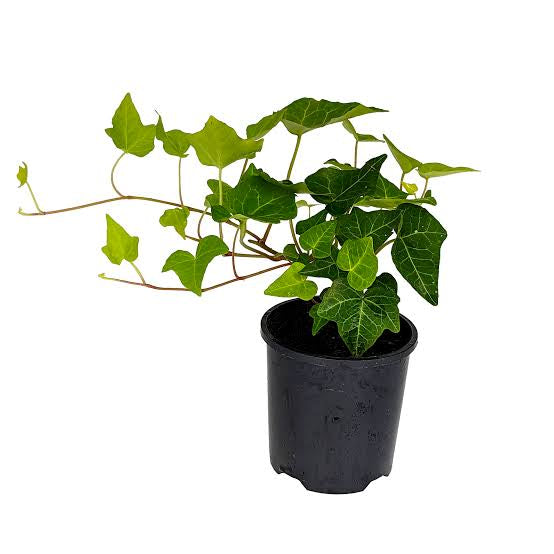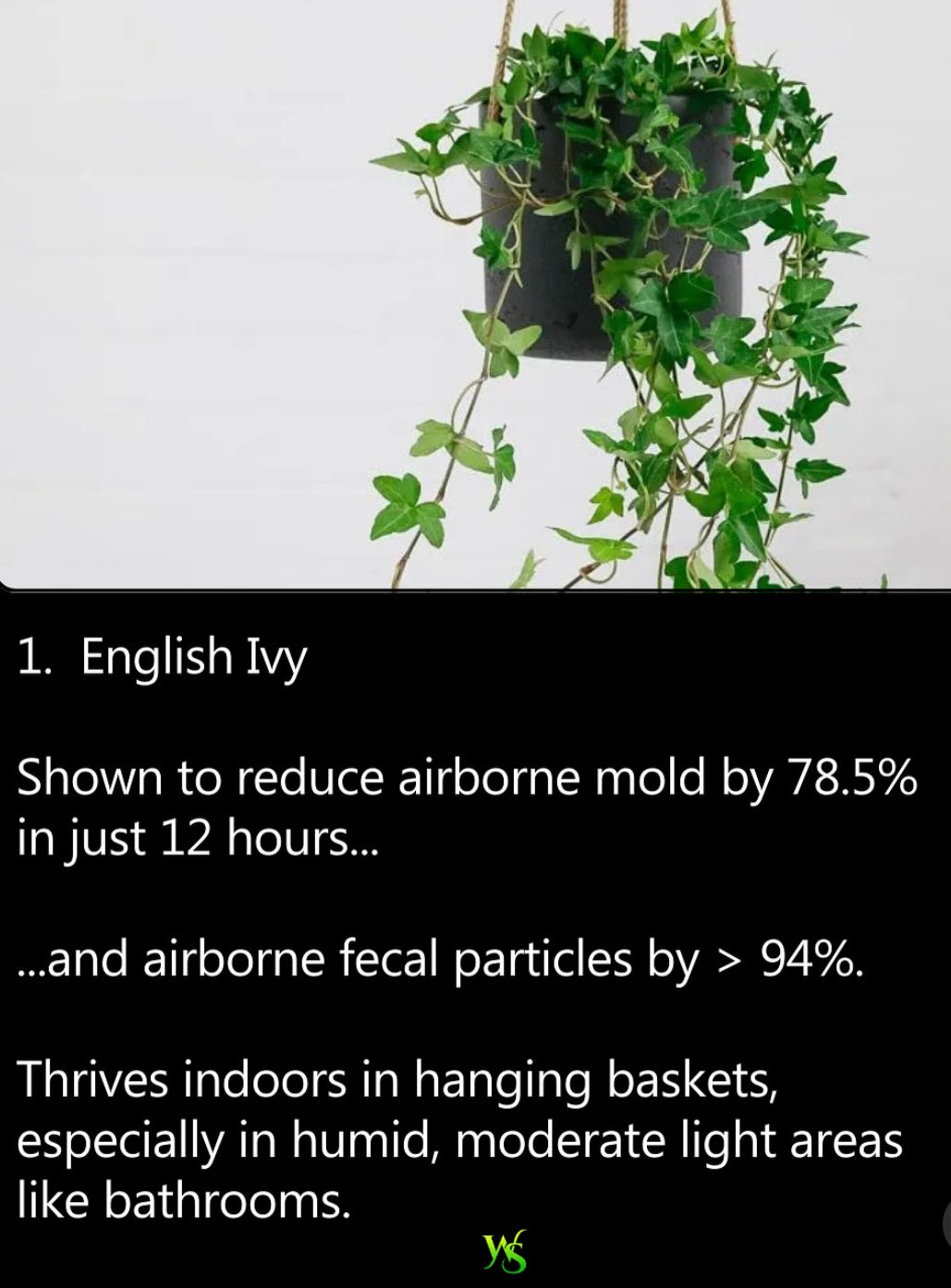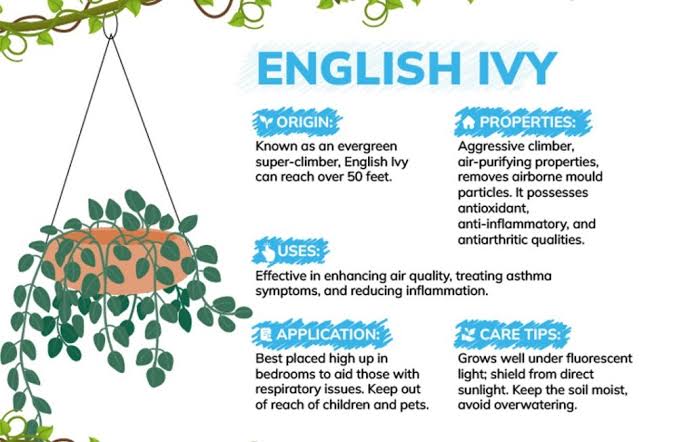1
/
of
3
Herbs 4 Healing
Large Leaf English Ivy (Hedera Canariensis)
Large Leaf English Ivy (Hedera Canariensis)
Regular price
$20.00 AUD
Regular price
Sale price
$20.00 AUD
Unit price
/
per
Couldn't load pickup availability
English ivy (Hedera Canariensis) is an effective air purifier, especially for removing airborn mold and other toxins. It can also absorb moisture and remove pollutants like benzene, xylene, carbon monoxide, formaldehyde, toluene, and trichloroethylene, according to NASA studies. While beneficial for air quality, it's important to note that English ivy is toxic to animals, so it's not suitable for homes with pets
English ivy thrives with consistent moisture (not soggy), bright indirect light, and regular fertilization during the growing season. It's best grown indoors due to its invasive nature and prefers a potting mix designed for indoor plants. Regular pruning helps manage its growth, and occasional misting can increase humidity, especially during dry indoor conditions.
Here's a more detailed breakdown:
Light:
- Bright, indirect light is ideal, but English ivy can tolerate lower light conditions, though growth may be slower.
- Avoid direct sunlight, which can burn the foliage.
- Variegated varieties will lose their markings in low light.
Watering:
- Keep the soil consistently moist, but not soggy.
- Water thoroughly when the top inch or two of soil feels dry.
- Reduce watering in the winter when growth slows.
Soil and Potting Mix:
- Use a well-draining potting mix designed for indoor plants.
- Ensure the pot has drainage holes to prevent root rot.
Fertilizing:
- Fertilize every 4-6 weeks during the growing season (spring and summer) with a balanced NPK fertilizer.
- Avoid fertilizing during dormancy (winter) or when the plant is stressed.
Temperature and Humidity:
- English ivy prefers temperatures between 50°F and 70°F.
- It can tolerate a range of temperatures, but extreme heat or cold can negatively impact it.
- Moderate to high humidity is ideal.
- Misting the plant or using a humidifier can increase humidity.
Pruning:
- Prune regularly to manage growth and maintain shape.
- The best time to prune is late winter or early spring.
Pests and Diseases:
- Check for pests like spider mites, which can be treated with water or neem oil.
- Monitor for leaf spots, which can be caused by fungal or bacterial infections.
Other Tips:
- Remove dust from the leaves with a gentle spray or shower.
- Repot the plant as needed, using a well-draining potting mix.
Product Description:
The pot size is Approx 150m Hish and 100mm wide. Plants Size Approx 100m H 300m-600m Length
You can see an example in the image gallery.
Share



No reviews



